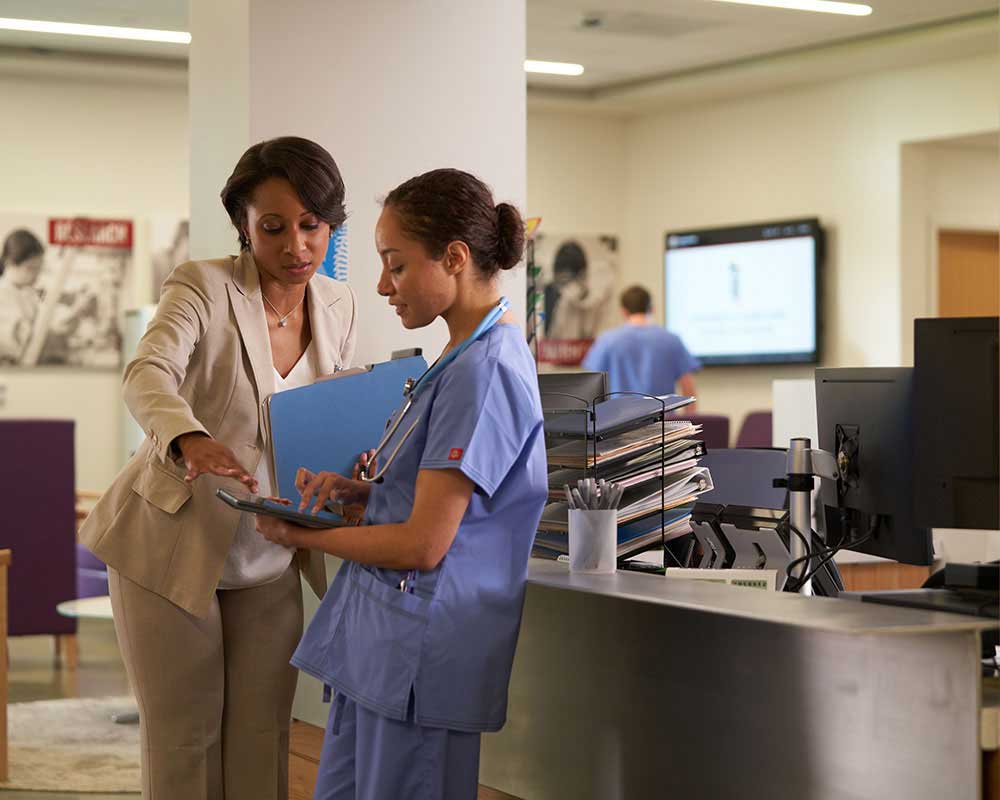A Total Guide to Medical Administration Certifications and Credentials
Ideal Practices in Medical Management for Improving Effectiveness and Reducing Prices
In the ever-evolving landscape of medical care, the quest of finest techniques in clinical administration is paramount for boosting effectiveness and curbing expenditures. By integrating sophisticated modern technologies such as digital health and wellness records and telemedicine, health care carriers can improve operations and enhance person treatment. Nonetheless, technology alone is not a remedy; maximizing resource allowance and fostering joint communication amongst treatment groups are similarly critical (medical administration). As organizations aim to balance top quality and expense, what methods should be focused on to achieve these twin goals? The solution to these questions hold the secret to an extra sustainable health care system.
Leveraging Advanced Innovation
In today's swiftly evolving healthcare landscape, leveraging sophisticated innovation is no much longer optional yet important for effective medical administration. The combination of electronic remedies right into healthcare systems has transformed the way facilities run, streamlining procedures and boosting person treatment. Electronic Wellness Records (EHRs) are crucial, giving thorough person information that can be accessed instantaneously by accredited employees, hence lowering redundancy and lessening mistakes. By streamlining individual information, EHRs remove the requirement for troublesome paperwork and help with seamless communication among doctor.
Telemedicine is one more technical innovation that has changed person interaction. It supplies comfort for both patients and medical care experts by making it possible for remote examinations, which can lower the requirement for in-person gos to and optimize consultation scheduling. In addition, telehealth platforms can prolong healthcare accessibility to rural or underserved locations, bridging spaces in treatment shipment.
In addition, the use of Artificial Knowledge (AI) and device understanding is becoming significantly prevalent in predictive analytics, permitting early detection of prospective wellness issues and even more enlightened decision-making. These technologies, when incorporated properly, can boost diagnostic accuracy and individualize patient treatment plans, inevitably leading to enhanced healthcare results and functional efficiency.
Optimizing Resource Allotment
Reliable source allocation is important for making best use of the efficiency of medical administration. By tactically handling sources such as employees, tools, and financial resources, healthcare facilities can considerably improve their operational performance, enhance client results, and lower unneeded expenditures. The primary step in maximizing source appropriation entails conducting an extensive assessment of current assets and identifying areas where sources might be underutilized or exhausted. This evaluation must be data-driven, using metrics and analytics to notify decision-making processes.
Focusing on resource appropriation based upon individual needs and solution demands is important. This involves straightening resources with high-demand locations, such as emergency treatment or specialized treatments, to ensure prompt and efficient patient treatment. Carrying out versatile staffing models can additionally optimize labor sources by adjusting employees allotment in feedback to varying patient quantities. Additionally, accepting telemedicine and other technological remedies can minimize physical source constraints by offering different avenues for patient-provider communications.
Economic resources need to be carefully monitored and assigned with critical insight to support both short-term operational requirements and lasting institutional objectives. This includes investing in training programs that enhance personnel proficiencies and taking on energy-efficient techniques that reduce operational costs (medical administration). Eventually, an enhanced source appropriation strategy fosters a sustainable healthcare environment that is responsive, effective, and economically sensible
Streamlining Process Procedures
When health care centers goal to boost functional efficiency, streamlining workflow processes becomes a pivotal focus. Reliable operations lessen redundancy, eliminate unnecessary steps, and enhance sychronisation among healthcare specialists. This strategy not just accelerates solution shipment however additionally boosts the top quality of person treatment.

Next, modern technology assimilation plays a substantial duty in streamlining process. Applying electronic wellness documents (EHRs) and electronic medical professional order access (CPOE) systems minimizes documents, reduces human error, and guarantees details is available to all appropriate employees. Additionally, leveraging telemedicine platforms can enhance person consultations and follow-ups, lowering the pressure on physical infrastructure.

Eventually, streamlined process result in cost reductions and improved client fulfillment, promoting a much more sustainable healthcare environment.
Enhancing Information Monitoring
Structure upon streamlined workflows, optimizing information monitoring ends up being a crucial element ahead of YOURURL.com time healthcare management. Reliable information management systems are essential for maintaining exact individual records, improving Web Site decision-making, and making certain conformity with regulative standards. By implementing durable data administration solutions, medical care facilities can enhance the top quality of client care while concurrently reducing functional costs.
One key facet of improving data monitoring is the combination of advanced digital health and wellness document (EHR) systems. These systems assist in the seamless exchange of individual info across various departments, lowering duplication of examinations and reducing mistakes. A well-designed EHR system sustains information analytics, enabling medical care carriers to determine fads and make informed choices regarding individual care.
Additionally, securing patient data is extremely important. Adopting detailed cybersecurity measures, including file encryption and normal audits, guarantees the integrity and discretion of delicate information. This not only shields patients however additionally keeps the institution's credibility.
Investing in personnel training is an additional crucial element. Informing medical care professionals on data administration methods boosts their capability to effectively utilize innovation, causing boosted patient outcomes. Finally, boosting information management through sophisticated innovation and detailed training is crucial for attaining performance and cost decrease in clinical management.
Fostering Collaborative Interaction
An essential part ahead of time clinical management is promoting collective communication among healthcare professionals. Reliable interaction is extremely important for making certain smooth individual care, optimizing treatment results, and reducing errors. By encouraging open discussion and control across multidisciplinary teams, healthcare companies can improve their operational efficiency and lower unneeded costs.
Central to this approach is the assimilation of interaction innovations such as electronic wellness records (EHRs) and secure messaging systems, which help with the rapid exchange of critical individual info. These devices allow healthcare providers to gain access pop over to these guys to and share data in actual time, guaranteeing that all employee are informed and straightened in their decision-making processes. In addition, routine team conferences and interdisciplinary rounds can even more promote a society of cooperation and responsibility.
Training programs focused on improving interaction abilities are additionally essential. Eventually, promoting collective interaction leads to boosted medical care distribution and price financial savings.

Conclusion
Incorporating advanced technology, such as electronic health records and telemedicine, alongside optimized resource allocation and streamlined workflow procedures, is vital for improving performance in clinical management. Efficient data management and fostering collaborative interaction amongst health care groups are crucial for minimizing redundancies and improving treatment top quality. By prioritizing precautionary care and taking part in top quality enhancement efforts, medical care companies can accomplish significant price financial savings and enhanced patient end results, therefore making sure sustainable healthcare shipment in a progressively complex environment.